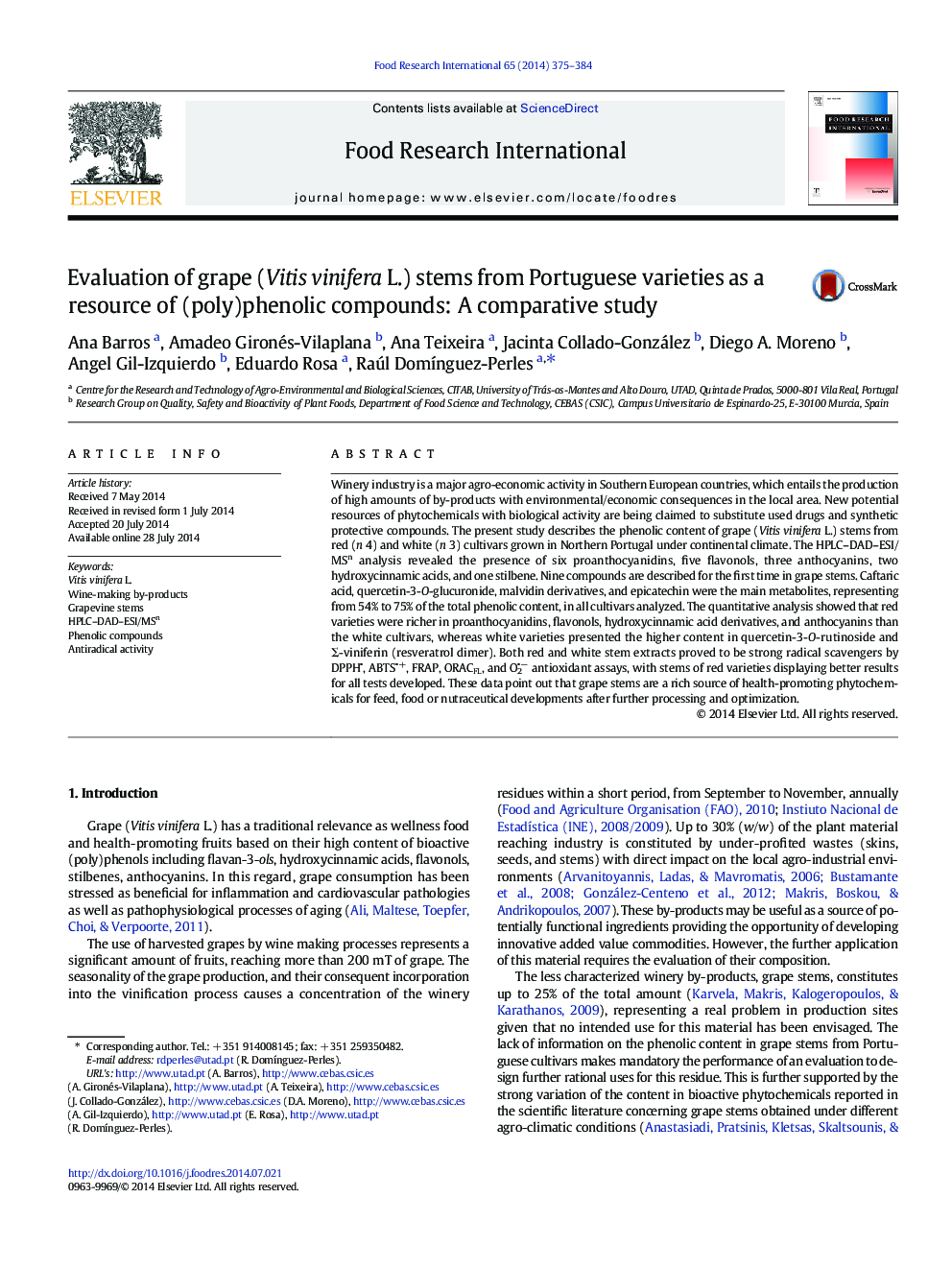| کد مقاله | کد نشریه | سال انتشار | مقاله انگلیسی | نسخه تمام متن |
|---|---|---|---|---|
| 4561589 | 1330661 | 2014 | 10 صفحه PDF | دانلود رایگان |

• Grape stems from red and white varieties have distinct phenolic profiles.
• Bioactive phenolics presented, in general, a higher concentration in red varieties.
• Kaempferol-glucoside and Σ-viniferin were more abundant in white varieties.
• Grape stems from red varieties displayed higher antioxidant potential.
Winery industry is a major agro-economic activity in Southern European countries, which entails the production of high amounts of by-products with environmental/economic consequences in the local area. New potential resources of phytochemicals with biological activity are being claimed to substitute used drugs and synthetic protective compounds. The present study describes the phenolic content of grape (Vitis vinifera L.) stems from red (n 4) and white (n 3) cultivars grown in Northern Portugal under continental climate. The HPLC–DAD–ESI/MSn analysis revealed the presence of six proanthocyanidins, five flavonols, three anthocyanins, two hydroxycinnamic acids, and one stilbene. Nine compounds are described for the first time in grape stems. Caftaric acid, quercetin-3-O-glucuronide, malvidin derivatives, and epicatechin were the main metabolites, representing from 54% to 75% of the total phenolic content, in all cultivars analyzed. The quantitative analysis showed that red varieties were richer in proanthocyanidins, flavonols, hydroxycinnamic acid derivatives, and anthocyanins than the white cultivars, whereas white varieties presented the higher content in quercetin-3-O-rutinoside and Σ-viniferin (resveratrol dimer). Both red and white stem extracts proved to be strong radical scavengers by DPPH, ABTS+, FRAP, ORACFL, and O2− antioxidant assays, with stems of red varieties displaying better results for all tests developed. These data point out that grape stems are a rich source of health-promoting phytochemicals for feed, food or nutraceutical developments after further processing and optimization.
Journal: Food Research International - Volume 65, Part C, November 2014, Pages 375–384